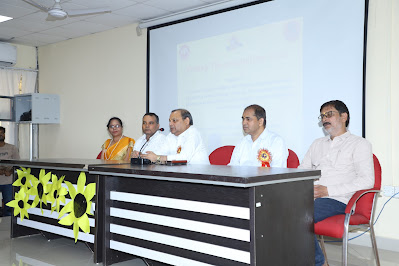Role of Public Relations Management in an Organization
It is in every organization’s interest to maintain a positive public image. Whether it is a public sector organization or a private sector organization, both types of organizations can only be benefit from proper management of their publics’ perceptions of the organization. Both types of organizations can reap benefits from a positive public image which not only helps to increase confidence in the organization on the behalf of the organization’s publics and key stakeholders but also reinforce trust in the organization’s capabilities towards success.
It is often misunderstood that the organizations practice public relations only for the purpose of publicity. But instead, the discipline of public relations (PR) deals with shaping and maintaining the image and reputation of the organization in the eyes of its various publics. It is the deliberate, planned and sustained effort to institute and maintain mutual understanding between the organization and its publics. It uses information to influence opinion for creating and maintaining goodwill. It is the practice of managing communication between the organization and its publics.
Publics, in PR terms, are the ones who ever have or ever will form an opinion about the organization. Publics are the interested audiences that are important in some way to an organization including current and potential customers, current and potential employees and management, investors, vendors and suppliers, media, government, and opinion leaders etc.
It is often misunderstood that the organizations practice public relations only for the purpose of publicity. But instead, the discipline of public relations (PR) deals with shaping and maintaining the image and reputation of the organization in the eyes of its various publics. It is the deliberate, planned and sustained effort to institute and maintain mutual understanding between the organization and its publics. It uses information to influence opinion for creating and maintaining goodwill. It is the practice of managing communication between the organization and its publics.
Publics, in PR terms, are the ones who ever have or ever will form an opinion about the organization. Publics are the interested audiences that are important in some way to an organization including current and potential customers, current and potential employees and management, investors, vendors and suppliers, media, government, and opinion leaders etc.
Roles of public relations management
Public relations can and should make an important contribution in helping to form an organization’s ideas about what it is, what it should do and what its publics want and expect from it.Communication management – A fundamental technique used in public relations is to identify the target audience and to tailor messages to be relevant to each audience. The public relations role calls for developing communications objectives that are consistent with the organization’s overall objectives. As two-way communicators, public relations professionals interact directly with key publics, relaying the resulting information (with recommendations) to other members of the management team.
Crisis management – Public relations establishes methods and policies to be used when the operations of the organization become involved in an emergency affecting the public. This includes policies and procedures for the distribution of information to employees, media, government and other key publics.
Issues management – This involves identifying problems, issues and trends relevant to the organization and then developing and executing a program to deal with them. This also includes the study of public policy matters of concern to the organization.
PR in marketing management – PR role in marketing management includes product publicity, product placement, third party endorsement, use of spokespersons, participation in trade exhibitions, and cause related marketing.
Relationship management – This involves the role of public relations in identifying key publics and establishing strategies for building and maintaining mutually beneficial relationships with those publics.
Reputation or image management – The planning and implementing of policies, procedures and strategies that demonstrate the commitment of the organization to public and social responsibility, ethical behaviour, corporate identity and reputation with key publics.
Resource management – Public relations management of human and financial resources revolves around setting objectives, planning, budgeting, recruiting and hiring PR employees and administering of these resources.
Risk management –
As preventive PR, this role involves making the organization recognize areas of potential danger so that needed changes can be made before potential dangers develop into crises.
Strategic management – Acting as a counselor, the PR professional helps the management team in developing sound policies that are in the best interests of the public as well as the organization. The PR professional integrates an understanding of the concerns and attitudes of key publics into the organization’s managerial decision making process.
Public relations professionals present the face of an organization usually to articulate its objectives and official views on issues of relevance, primarily to the media. Public relations activity contributes to the way an organization is perceived by influencing the media and maintaining relationships with stakeholders.
The possibilities of success of public relations efforts enhances if public relations professionals work with and answer to senior management and deal directly with the critical external and internal publics on which an organization depends.





No comments:
Post a Comment
Please share your views